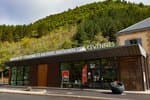MTB 7 - Dargilan - graded blue
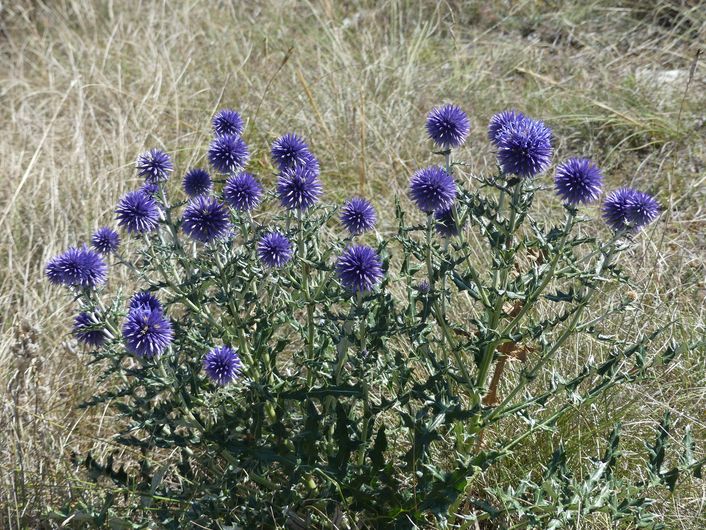
Meyrueis mountain-bike
mountain-bike
MTB 7 - Dargilan - graded blue
Easy
2h45
20,8km
+355m
-355m
Loop
Embed this item to access it offline
5 points of interest
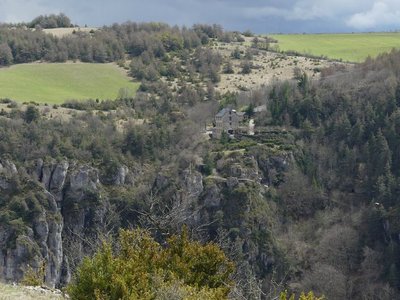
Dargilan - nathalie.thomas  History
HistoryEdouard-Alfred Martel
The marvellous caves in this area were discovered thanks to the efforts of one man, Edouard-Alfred Martel. This caving pioneer notably discovered Dargilan Cave and the Abîme de Bramabiau in 1888, as well as Aven Armand cave in 1897. He fought to make them better known through articles and conferences. According to Jacques Fountes “Martel was a combination of tourist office and travel agency all by himself. It is not an exaggeration to say that Martel lifted Lozère out of anonymity.” He was convinced that tourism could create economic growth in the Grands Causses region.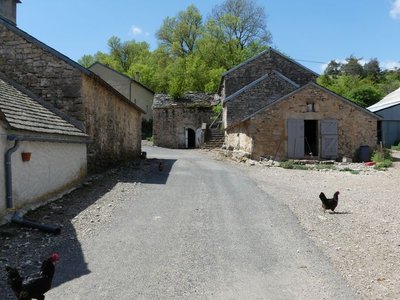
Le Marjoab - nathalie.thomas AgricultureSérigas, Marjoab
Here, local farms breed goats to produce milk for making Roquefort cheese. In the 17th and 18th century, farmers used their milk to make cheese for themselves. In 1842, following the collapse of wool rates, the “Société des Caves et Producteurs Réunis” was formed to centralise cheese-ripening in Roquefort. A large number of dairies were opened in Causse hamlets. It was not until 1929 that the “Confédération des Eleveurs de Brebis et des Industriels de Roquefort” was created to once again jointly manage Roquefort production.
Ancienne fromagerie - nathalie.thomas AgricultureCheese-making with sheep’s milk
Until the 19th century, sheep were bred for their wool. Their milk was used to produce cheese for the family, which was matured in cellars or caves. It was not until 1880 that the production of blue sheep’s cheese flourished. In 1925, Roquefort became the first cheese to be declared an Appellation d’origine contrôlée (Protected Designation of Origin). Now internationally renowned, Roquefort is exclusively matured in the cellars of the village of the same name.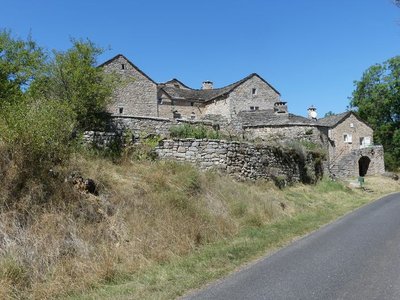
Luc - nathalie.thomas  History
HistoryFortified farms
Several fortified farms punctuate the circuit, such as the one in Luc, which has a ruined windmill. In the 13th century, these farms were bequeathed to the order of the Knights Hospitaller, which was well-established in the Causses region. During the French Revolution, middle-class locals bought them back.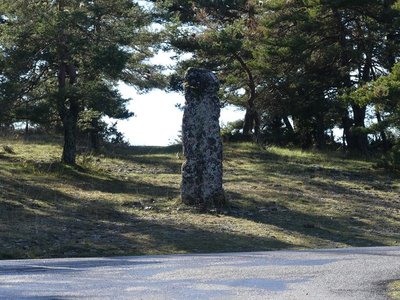
Pierre des Trois Évêques - nathalie.thomas  History
HistoryThree Bishops’ Stone
At the crossroads of the D39 and D139 is a standing stone topped by a stone cross. Today the monument symbolises the exact spot where three departments meet: Aveyron, Gard and Lozère. At the times the cross was erected, it indicated the limits of the dioceses of Vabres in the Aveyron, Nîmes in the Gard and Mende in the Lozère.
Description
From the car park, take the track suitable for motor vehicles that leads to Sérigas.
1) Go through the hamlet to reach the D 39. Turn right onto the road, then leave it again to take the second on the left, towards Le Marjoab. At the top of the slope, go right and pass through several gates to reach Le Marjoab.
2) Cross the village and take the road that leads to the D 47. Turn right onto the D 47. At the second intersection, turn right. The track joins up with the D 47c: turn left onto it and at the next crossroads turn right and continue to Les Mazes.
3) From les Mazes, continue straight ahead on the track till you reach Alluech.
4) In the village of Alluech, continue left between the houses. Cross the road and follow the path opposite to the GR® 62a trail.
5) Turn right onto the GR; the path between two hedges continues in the forest. It comes out on a road: turn left onto it and continue to the hamlet of Luc.
6) By the farm, leave the road for a path that passes close to a farm building. Continue on this path, which joins up with the D 47c.
7) Turn left onto the road and, at the crossroads, continue straight ahead on the D 139 till you reach the car park in Dargilan that you started from.
1) Go through the hamlet to reach the D 39. Turn right onto the road, then leave it again to take the second on the left, towards Le Marjoab. At the top of the slope, go right and pass through several gates to reach Le Marjoab.
2) Cross the village and take the road that leads to the D 47. Turn right onto the D 47. At the second intersection, turn right. The track joins up with the D 47c: turn left onto it and at the next crossroads turn right and continue to Les Mazes.
3) From les Mazes, continue straight ahead on the track till you reach Alluech.
4) In the village of Alluech, continue left between the houses. Cross the road and follow the path opposite to the GR® 62a trail.
5) Turn right onto the GR; the path between two hedges continues in the forest. It comes out on a road: turn left onto it and continue to the hamlet of Luc.
6) By the farm, leave the road for a path that passes close to a farm building. Continue on this path, which joins up with the D 47c.
7) Turn left onto the road and, at the crossroads, continue straight ahead on the D 139 till you reach the car park in Dargilan that you started from.
- Departure : Dargilan hamlet
- Arrival : Dargilan hamlet
- Towns crossed : Meyrueis, Lanuéjols, and Veyreau
Forecast
Altimetric profile
Recommandations
No off-roading. You are strongly advised to wear a helmet. Do not forget your repair and tool kits. Please close all gates and barrier behind you. Slow down in farms and hamlets. Carry sufficient water. Be careful around livestock and guard dogs: get off your bike if necessary; do not rush them!
Information desks
Tourism'house and national Parc at Florac
Place de l'ancienne gare, N106, 48400 Florac-trois-rivières
This office is part of the National Park's associated tourist-information network, whose mission is to provide information on, and raise awareness of, the sites and events as well as the rules that must be observed in the National Park's central zone.
On site: exhibitions, video projections, events and shop Open year-round
Access and parking
From Meyrueis, take the D 39 towards Sérigas, then the D 139 towards Grotte de Dargilan. Park in the hamlet of Dargilan, 500 m before the cave.
Parking :
Dargilan hamlet
Calculateur d'itinéraire Lio
Utilisez le calculateur liO pour organiser votre trajet en région Occitanie.
Autres régions
Calculez votre itinéraire en Auvergne Rhône Alpes sur Oùra
Biodiversité autour de l'itinéraire
Source

Agence d'Attractivité Touristique Gorges Causses Cévenneshttp://www.cevennes-gorges-du-tarn.com

Parc national des Cévenneshttp://www.cevennes-parcnational.fr/
Report a problem or an error
If you have found an error on this page or if you have noticed any problems during your hike, please report them to us here:

